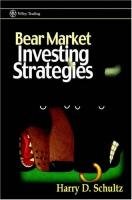
Over the last 20 years, investors have increasingly come to regard investing in
stocks about the same as putting money in the bank—except they got a higher
return. This belief became so pervasive that, as recently as 2000, the government in Washington was still talking about putting part of the Social Security account into securities in order to earn a higher return. After the Nasdaq crash, that plan was quietly dropped. Even investors who researched stocks before buying them either mostly used computer programs that rely on past action repeating more or less exactly in order to predict future buy or sell points, or they used Internet advice which in many cases was nothing more than thinly
disguised sales pitches.
There is an old adage which says that knowledge can be communicated but wisdom has to be self-taught. I hope that, by the end of this book, you will have enough knowledge to evolve your own market wisdom.
With the coming of the Internet, investors were so focused on acquiring the
latest information on securities that many never bothered to learn how that
information could be best used. And just as many of us have lost the ability to spell correctly or do simple arithmetic because we rely on spell checks and computer calculators, so investors who rely only on the Internet for investment know-how have never had to learn the basic signals to judge where markets will go next. Even more dangerous is the assumption that prediction is a scientific process, whereby if you have the right piece of software that correctly predicted market turning points in the recent past, it would certainly be able to predict the future. But market analysis is not a science; it is an art, using intuition and experience to make sense of evolving data. Past patterns may at times not have their usual relevance for future predictions.
I have been writing an investment newsletter for 38 years, and I seem to be
on virtually every investment mailing list there is. During the last 5 years of the 1990s, I was inundated with junk mail from software companies claiming to have the key to future market success, based only on their program having called turning points for a few prior years. These software packages used such phrases as: ‘‘fully automated trading software,’’ and ‘‘built-in portfolio,’’ implying that all you needed to make money in the stock market was knowledge of how to operate their software.
Until the mid-1990s, analysts on financial news programs did useful research
and offered informed opinions of where markets in general and specific stocks
were likely to go. But increasingly over the subsequent years those same
analysts concentrated ever more on being entertainers, as all business news
programs became little more than infomercials for their advertisers. The
focus became less to seriously inform and more on keeping the viewer
watching so the advertisers would have an audience.
But then markets topped out, Nasdaq crashed, and the war on terrorism
gave the media permission to use the word ‘‘recession,’’ without being accused
of ‘‘talking down the market.’’ Investors were left wondering what to do with
stocks that in many cases had already lost a substantial portion of their value
in the prior 2 years. Their ‘‘magic bullet’’ software programs failed them, and
they lacked basic market know-how, or how to invest in what appears to be the
early stages of a protracted bear market.
This book is designed to upgrade investors’ knowledge with the basics of
how to make investment decisions, with particular reference to bear markets,
bull market corrections and recessions. But simply knowing how to make
respectable buy and sell decisions is not enough. Nobody in the history of Wall Street has ever guessed right all the time. It’s therefore necessary not only to decide how to predict market direction, but what strategies to use to minimize losses when you guess wrong, and maximize your profits when you are right.
The ultimate decision for your investments is made by you. Over the nearly 4
decades I have been advising clients, there have been many times when I would
give the same advice to three people, and one would make money, one would
break even, and one would lose money. However good the advice we receive, we always inject our own judgment into the equation. In this book, we will discuss how best to make your own informed decisions. A key principle of technical analysis is that there are certain recurring 2 Bear Market Investing Strategies patterns of investing behavior that can be charted. But no technical tool works all the time. Though history does seem to repeat itself in a general sense, it never repeats exactly, so no one model of past action, be it a war, inflation, civil unrest, or a bear market, is sufficient to ascertain what the future will bring.
After the September 11, 2001 attack on New York and the Pentagon,
advisors rushed to predict future markets, based on what the Dow Jones
Averages did in the Gulf War, or the Vietnam War. But the war on terrorism is unlike any war in the past. The recession of 2000 seems likely to
have variations from a number of past recessions. The best way to use the past for future projections is to have as much history as possible of past events: market averages, individual stock groups, technical indicators such as
Confidence Index or advance/decline lines, wars, government monetary intervention, etc. Then check for similarities to what is happening today. With this data, we can then build a mental big picture for possible future market direction based on elements of as much history as possible, which taken together form a totally new paradigm. This book discusses past models based on technical analysis and chart reading, plus similar economic, political, war, and social conditions. Hopefully, by the end of this book, you will have enough information to construct your own market vision for the next several years.
| Прикрепленный файл | Размер |
|---|---|
| Bear_Market_Investing_Strategies.zip | 679.26 кб |

